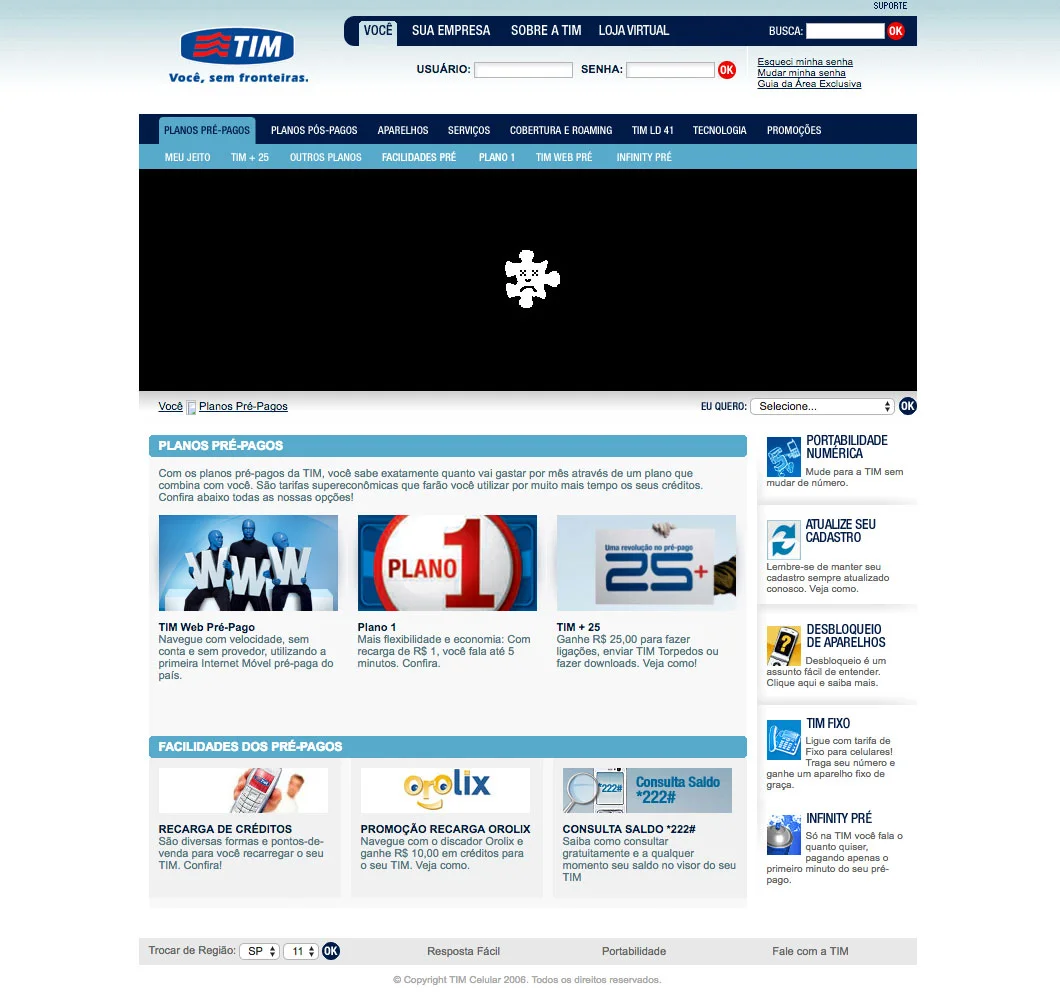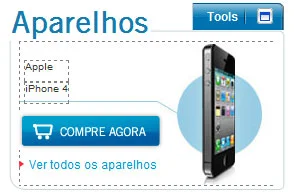TIM Brasil - Portal website
Company:
Telecom Italia Mobile
Business case:
TIM is the second biggest telco player in Brasil having more than 70 million active clients in its database. In 2011, when I joined the company, my main goal was be in charge of the new TIM portal, improving its performance in 3 segments: plans, client self care and web store. The portal used to have some critical marketing, management and user experience issues that need to be tackled in the first instance:
Marketing
- Website did not reflect company's ambitions and concept, being old fashioned and not brand compliant;
- Concurrents were 1 step ahead, having fresh design concepts, way more stick to trending ideas at the time;
- Information architecture were confusing, affecting findability, conversion rate and clients experience;
Management
- CMS version were way out of date;
- Templates containing several hard coded bits and not flexible enough for content management;
- Tracking system by Google Analytics were not implemented;
- Indexing by crawlers were being blocked due to necessity of pre home page;
- Menu and submenu placed horizontaly, restricting new sub categories;
User Experience
- Several banners and digital services built in flash technology;
- Page coded in old language, HTML not fluid;
- Loading time higher than 10 seconds;
- Internal search engine was not reliable, giving the false impressions of lack of information;
- It was built considering screen resolution 1024x768, decreasing in popularity;
- There was no SSL certificate in the open area, causing security alerts once going to the customer self-service area (MyTIM).
Solution and milestone:
The first and critical issue for the business was the pre-home page that was blocking crawlers and affecting all website indexation. For this reason, TIM's website presence at SERP use to be really small. Most of traffic coming from direct access. To fix that we have signed for an IP recognition service which provided the source of each access and allow TIM server to show suitable content for each state. (Brazil has 26 states, which means 26 customised content in several pages)
All of this mix of customised and common content created several issues in our SEO plan as it has generated several duplicated content, pages, titles and meta tags, which we also resolved by creating canonical URLs and automated titles and tags to reflect the state info on it, creating 26 similar but different content.
The new CMS allowed editors to manage titles, tags, alts and all SEO bits, although the biggest gain once migrated to this version was make the team able to edit in context, allowing even non-technical editors to manage content through an extremely user friendly interface. Adding the new templates and its flexibility all together made admin tasks much faster and we no longer need to rely on IT to make simple changes.
New templates also has fixed the menu and top navigation which has changed several times till we find the best option UX wise.
OpenText editor in context. (Gartner Quadrant)
Some other actions were made by my team in order to give us more control over traffic and behaviour at TIM's website. First we have setup Google Analytics and Google console. Then in order to understand users flow, we also add heat-map tools, digital surveys and MVT scripts. All these add-ons required help from IT, making the process a bit slow in the past. So due to fix this issue we have also implemented Google Tag Manager, making us able to quickly add, edit or delete scripts or tags.
Once tracking the whole website and navigation end to end we could start managing performance and in 4 years traffic has improved form 3MM/month to 13MM/month sessions in late 2014.
Im my last 3 years I've got the digital project manager role, delivering massive updates in code, interface and CMS, keeping the website compliant with latest web standards and Google grade. We have allocated budget and a dedicated IT team working in SCRUM methods, reducing the average time to release from 4-6 months to every 2 months. I managed a team of 2 full stack developers, 1 web analyst and 1 copywriter. We also worked in partnership with Accenture (4 backend developers) and TIM IT (4 backend developers) dealing with the legacy and middleware. My team was responsible for documenting, wireframes, layout, coding, quality assurance / UAT and support deploy.












